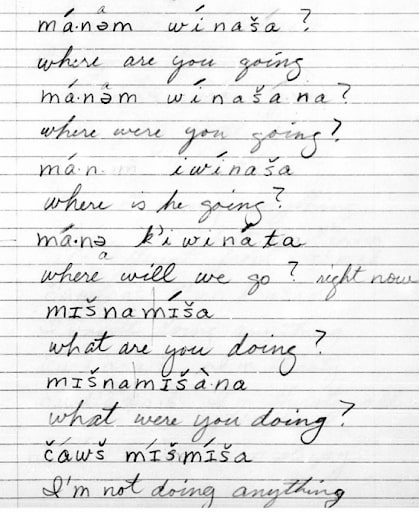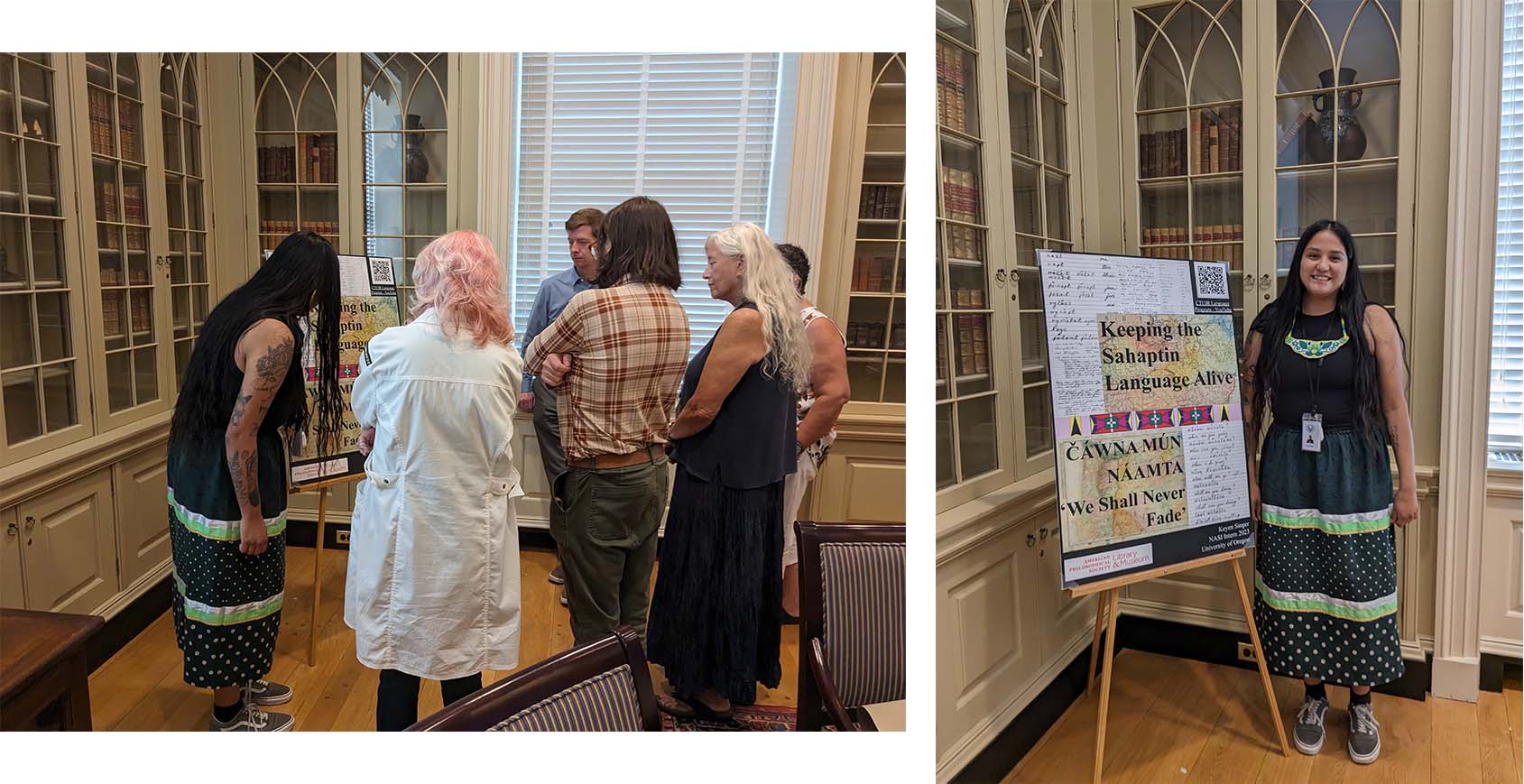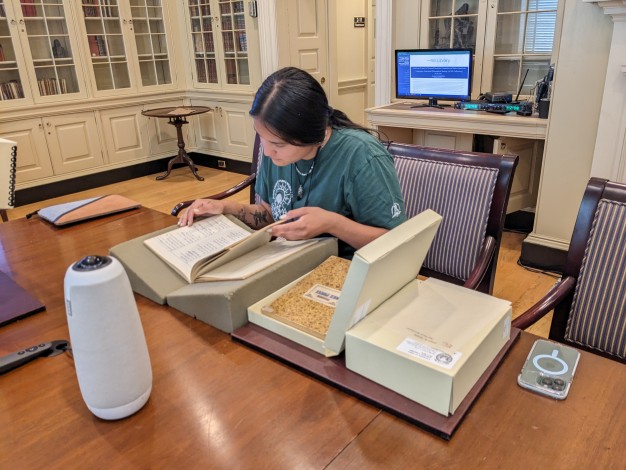Accessing Sahaptin Language Material from APS Archives
I utilize the Sahaptin Language Field notes in the APS archives for language reclamation with the Confederated Tribes of the Umatilla Indian Reservation Language Program.
níix̣ łk̓ʷí ínaš waníša šuyaputɨ́mt Keyen Singer, ku tanán waníčt wáašaša qɨ́msali pt̓ínits
I applied for the Native American Scholars Initiative undergraduate internship at the American Philosophical Society to retrieve Eastern Oregon tribal materials held in the Center for Native American and Indigenous Research’s (CNAIR) archives. My goal was to find anything related to my tribal lands—like notes, maps, or recordings created by anyone in the tribe or close researchers to bring them back to my tribe’s department of Natural Resources, the Energy and Environmental Science program (EESP), where I have worked for the past two summers. I also searched for any materials related to First Foods, which are our traditional gathering foods from our land, such as water, fish, game, roots, and berries, with cultural and economic significance.
As I looked through the archives in July, I found that most of these documents were linguistic materials with many tribal languages, particularly in Bruce Rigsby's collection of Sahaptin field notes (Mss.Film.1261). While still searching for any material from my tribe, I found Oregon maps with markings of traditional homeland boundaries. Although my research was starting to focus on two different subjects, I was able to merge them together when I found that these maps were annotated in notebooks that described the languages used in different regions.

My research was further looking into the maps on the tribes of the Pacific Northwest, but more specifically, the map with the earliest traditional homelands in Eastern Oregon. I compared these older maps with the current maps my tribe has created, and took notes on the Sahaptin field notebooks in the Rigsby collection. The importance of these field notes for my tribe's language is bringing back a piece of history to my tribe. This is especially important to my people now, since the contributing speakers, Inez Spino and Vera Jones, are no longer here.
My efforts to find any environmental or First Foods materials for my original research goals weren’t successful, so I had to change my perspective from natural resource archival material to more linguistic materials that I could start applying to ‘Revitalizing the Sahaptin Language’ and collaborating with my tribe. I was able to share the Oregon maps with my tribe, but it seems that these maps were similar, in general, to the maps EESP shared with me. So, I decided to look into the microfilm field notebooks and start taking notes on the language and the speakers that have contributed. As stated in my tribe’s language program online dictionary page, Inez Spino and Vera Jones were vital contributors to the making of our tribal language dictionary, so I started to note the months and days they spoke with Rigsby. While looking into my tribe's language website page, I also found that Rigsby has been a part of the making of our language dictionary, and this gave me an idea.
Since I couldn’t research natural resources or environmental science like documents, I decided that I could possibly start a “Sahaptin Language Nature Walk to Keep our Language Alive,” on my reservation. The idea is to create a video of me speaking the language and walking around the forest on the reservation, stories around our government and tribal health center walking trails, and parts of the reservation that are most visited by visitors and tribal members. My hope is that this idea would allow tribal members to start using the language more consistently. This idea is also inspired by Brian Carpenter’s suggestion to look into the Ojibway nature walk videos that are in the APS archives. Hopefully when I look into those, I’ll have a better starting point. When I presented my research in the APS Brown Bag presentation in July, I also gained more support from researchers with more links and other resources, so now I’ll connect with those resources and get more information on how to start bringing this idea forward.

My studies have been focused on supporting and revitalizing any archival materials for my tribe and share the research that I have started. I am very grateful to have had this opportunity to travel across the country to access these archival materials from CNAIR.

